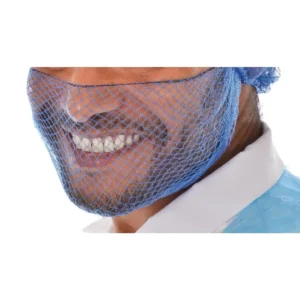Complete Safety Signs Checklist (England & Wales)
Ensuring your venue stays legally compliant. If your catering or hospitality venue is situated in England or Wales, your signage
Ensuring your venue stays legally compliant. If your catering or hospitality venue is situated in England or Wales, your signage
Available in a range of sizes, our brand new illuminated menu covers are all the rage. Our illuminated LED menu
Shop across our entire range of catering & hospitality products with up to 70% off until midnight Monday 1st December.
The leather menu cover can play a crucial role with customer’s first impressions. At Smart Hospitality Supplies, we have made
Foodborne diseases pose a considerable global health issue, not excluding the United Kingdom. Every year, numerous instances of food contamination lead to sickness, hospital admissions, and fatalities. Mitigating these diseases is a shared responsibility. An often neglected yet vital element in upholding food safety protocols is the significance of chef clothing. In this blog, we will explore the importance of chef wear in preventing food poisoning, the various pathogens and bacteria responsible for such diseases, and the impact on the UK population over the years.
Foodborne diseases arise when eating contaminated food tainted with detrimental bacteria, viruses, parasites, or toxins. These harmful agents can infect food at different points, including during production, processing, preparation, or preservation. Poor food handling, insufficient cooking, or cross-contamination are additional factors that can amplify the occurrence of these diseases.

Numerous pathogens and bacteria are culpable for triggering foodborne diseases. Some of the most frequently encountered ones include:
Salmonella is usually found in raw meat, chicken, egg and dairy products that are yet to be pasteurised. It can easily cause vomiting, diarrhoea and other illnesses.
Campylobacter, usually encountered in raw poultry, unpasteurised milk, and contaminated water, can cause foodborne illness. When contaminated food is ingested, it triggers symptoms like diarrhoea, abdominal pain, and fever.
Escherichia coli, or E. coli, can be found in undercooked ground beef, unpasteurised milk, and fruits and vegetables that have been infected. An infection with E. coli can lead to severe diarrhoea and abdominal cramps and, in some instances, can cause kidney failure.
Listeria monocytogenes is a bacterium in ready-to-consume foods, including deli meats, soft cheeses, and chilled smoked seafood. Infections caused by Listeria can pose severe risks for pregnant women and significant illness in newborn babies.
Foodborne illnesses have significantly impacted the UK population over the years. According to the Food Standards Agency (FSA), around one million cases of foodborne illnesses occur in the UK annually, leading to an estimated 20,000 hospitalisations and 500 deaths.
Hygiene and cleanliness are also legally required in food establishments, with rigorous standards set by health regulations. Non-compliance can lead to severe repercussions, including fines, business closure, and significant reputational damage.
The cleanliness of the food environment heavily influences customer satisfaction and trust. Cleanliness in the kitchen and dining area helps foster customer confidence in the quality and safety of the food they consume. Likewise, a clean and hygienic workspace is essential for maintaining the employees’ health, morale, and productivity. This is especially critical in the food industry, where different food types are handled simultaneously, requiring high standards to prevent cross-contamination.
Hence, staff training, regular cleaning schedules, and adherence to best practices are fundamental elements in any culinary establishment.
The value of a chef’s uniform goes far beyond mere aesthetics. Chef wear protects the wearer and the food they are preparing. The essential components of chef wear include the chef’s coat, pants, apron, hat, and shoes. Each element has a specific function; collectively, they help uphold food safety standards.
The double-breasted chef’s coat is perhaps the most recognisable component of chef wear. Its design isn’t just about prestige and professionalism; it has practical benefits too. Made of durable, heat-resistant material, the chef’s coat is a barrier against hot splashes from cooking liquids, open flames, and even steam burns. Its long sleeves protect the chef’s arms while handling hot pots and pans. Also, the double-breasted design allows the chef to reverse the coat, hiding stains that could otherwise cause food hygiene concerns.
Chef’s pants are typically loose and made of sturdy material. They protect against spills and splatters and provide comfort during long hours of standing. On the other hand, the apron is more than just a garment to keep the chef’s clothes clean. It acts as an additional protective layer against hot spills and food debris. Significantly, aprons are frequently changed and cleaned, preventing cross-contamination between different food preparation stages.
The chef’s hat, or toque, is another critical component in the culinary uniform that contributes to food safety. It prevents hair from falling into the food, ensuring cleanliness. Chef’s shoes, often overlooked, play a crucial role too. It is designed to be non-slip, so they prevent accidental falls in a wet and busy kitchen environment. They also protect feet from hot spills or dropping heavy kitchen equipment.
While not technically part of the uniform, hand hygiene is critical to a chef’s attire. Regular hand washing, especially when switching between food types, can prevent the spread of bacteria and viruses. Chefs often wear gloves when handling raw food or ready-to-eat meals, protecting against cross-contamination.
Preventing foodborne illnesses requires a multi-faceted approach, and chef’s clothing plays a vital role in maintaining food safety standards. By promoting personal hygiene, preventing cross-contamination, and complying with food safety regulations, chefs significantly contribute to safeguarding their customers.
If Chefs want to protect themselves in the kitchen, heat-protected chef clothing is essential.



A Company Registered in England & Wales Company Registration Number: GB05069286 VAT Registration Number: GB867112521 Smart Hospitality Supplies is a trading division of The Smart Marketing & Media Group Limited
